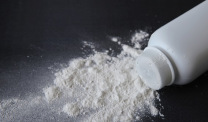Indirect Exposure to Asbestos Is Still Risky for Sheet Metal Workers
Research & Clinical TrialsWritten by Tim Povtak | Edited By Walter Pacheco

Sheet metal workers rarely handle asbestos directly, but they remain seven times more likely to die from mesothelioma, the rare cancer caused by it, than the general population, a recent study shows.
The findings published earlier this year in the American Journal of Industrial Medicine reiterated the long-held but increasingly-debated belief that even indirect exposure to toxic asbestos remains a serious threat, long after its use as a building material was reduced dramatically in the U.S.
“The most important thing to take from this study is that you didn’t have to work with asbestos directly to be in danger,” Dr. Laura Welch, medical director at the Center for Construction Research and Training in Silver Springs, Maryland, told Asbestos.com. “All you had to do is be around it.”
Welch co-authored the study with John Dement, Ph.D., Division of Occupational and Environmental Medicine at Duke University. They examined the records of 17,345 sheet metal workers who had at least 20 years on the job and participated in a respiratory screening program. They tracked the cause of death from 1986 through 2010.
There were 6,636 deaths from the original cohort at the Sheet Metal Occupational Health Institute Trust by the end of December 2010. There were 808 deaths from lung cancer, 404 from COPD, 85 from mesothelioma and 11 from malignant neoplasm of the pleural, a form of mesothelioma.
Long Latency Period to Diagnosis
The majority of deaths from mesothelioma, asbestosis and neoplasm of the pleura occurred 40 years or more after first exposure.
While the standardized mortality rates from all cancers showed no rise in sheet metal workers, the rate for mesothelioma was 7.34 times the normal rate. It was 9.84 times the normal rate for those 40-50 years after entering the trade. It was only 6.43 times the standard rate for those 30-39 years after starting work.
“The findings were not particularly surprising to us,” she said. “But for anyone thinking that bystander exposure was nothing to worry about, this just makes it clear that it’s not true.”
Sheet Metal Work and Indirect Exposure to Asbestos
Sheet metal work typically involves the installation of metal products like ventilation systems, the fabrication of air conditioners or refrigerators. Sheet metal workers in construction are around steel beams that have been fireproofed with asbestos coatings, or in close proximity to insulation workers applying other asbestos materials.
It can include installation of roofing and siding. Riveting, hammering and drilling sheet metal to anything coated with an asbestos product can release fibers into the air that become easily inhaled.
Those fibers become lodged in the lining of a person’s lung, where they slowly cause scaring that leads to any number of respiratory issues. The latency period between first exposure and mesothelioma diagnosis can be anywhere from 20-60 years.
Occupational exposure to asbestos is the leading cause of mesothelioma. Construction work, in general, was considered high-risk throughout much of the 20th century because of the widespread use of asbestos products. Asbestos was mixed with most everything to help strengthen and fireproof.
Other Job with High-Risk Exposure to Asbestos
Many other careers carried a high risk of exposure to the hazardous mineral, including:
- Insulators
- Electricians
- Plumbers
- Roofers
- Carpenters
- Tile Setters
- Cement and brick layers
Much of the exposure with sheet metal workers was attributed to the spraying of asbestos coatings, which stopped in the mid-1970s after the toxicity of the product became known.
Asbestosis, a respiratory disease caused by the inhalation of asbestos, had a rate of mortality at 11.74 times the normal rate in the general population, the study shows. It was also the highest in the study.
Welch said she expects to see a decline in the asbestos-related deaths among sheet metal workers, but not for another decade or two.
“I think the exposure we’re seeing now is lower, which usually means the latency period will be longer,” she said. “We may have to wait another 20 years to see the actual reduction in another study.”






